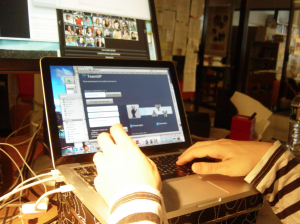Update 30.9.2011: The Report on Design Prototypes and Design Challenged for Education is now available at the iTEC website’s Results and deliverables -page.
The After the summer holiday, we have been working full speed on carefully developing the TeamUp tool into a working software prototype and on finalizing the official report ‘Design challenges, opportunities and prototypes in education’.
With the TeamUp tool prototype development our attention particular focused on developing the newsflash recording of learning for reflection. We believe that the audio recording will help learner and teachers, not only to keep track on the progress in the learning project, but also reflect on their activities and learn from it.
During August, we overcame the challenge of establishing the connection between different computers in a classroom so that the status of TeamUp would be visible on each learner’s computer in a classroom simultaneously.
The ‘Design challenges, opportunities and prototypes in education’ report describes the design process of WP3, the recognized design challenges, the identified design opportunities and the designed prototypes. The report also includes the conclusions that we drew from the cycle 1 in the WP3, as well as descriptions of which learning stories, learning activities and software prototypes should be used and how by teachers during the iTEC cycle 1 piloting in September. Thanks to the thoughtful comments of several people in other work-packages. The final report was submitted yesterday.
The piloting of cycle 1 will start in a few weeks. Currently, the cycle 1 piloting instructions for the teachers, including technical support for testing TeamUP, are being translated by the national coordinators. We are looking forward to the experience reports of over 210 teachers in 15 countries who will participate in the piloting!
While the pilots are taking place, the second iTEC cycle has started. Although busy with the above mentioned, the Participatory Design session summaries with teachers in 8 countries on the second round of scenarios were already partially analyzed and links to previously identified challenges and opportunities were recognized. The continuing analysis will be documented in this blog.








